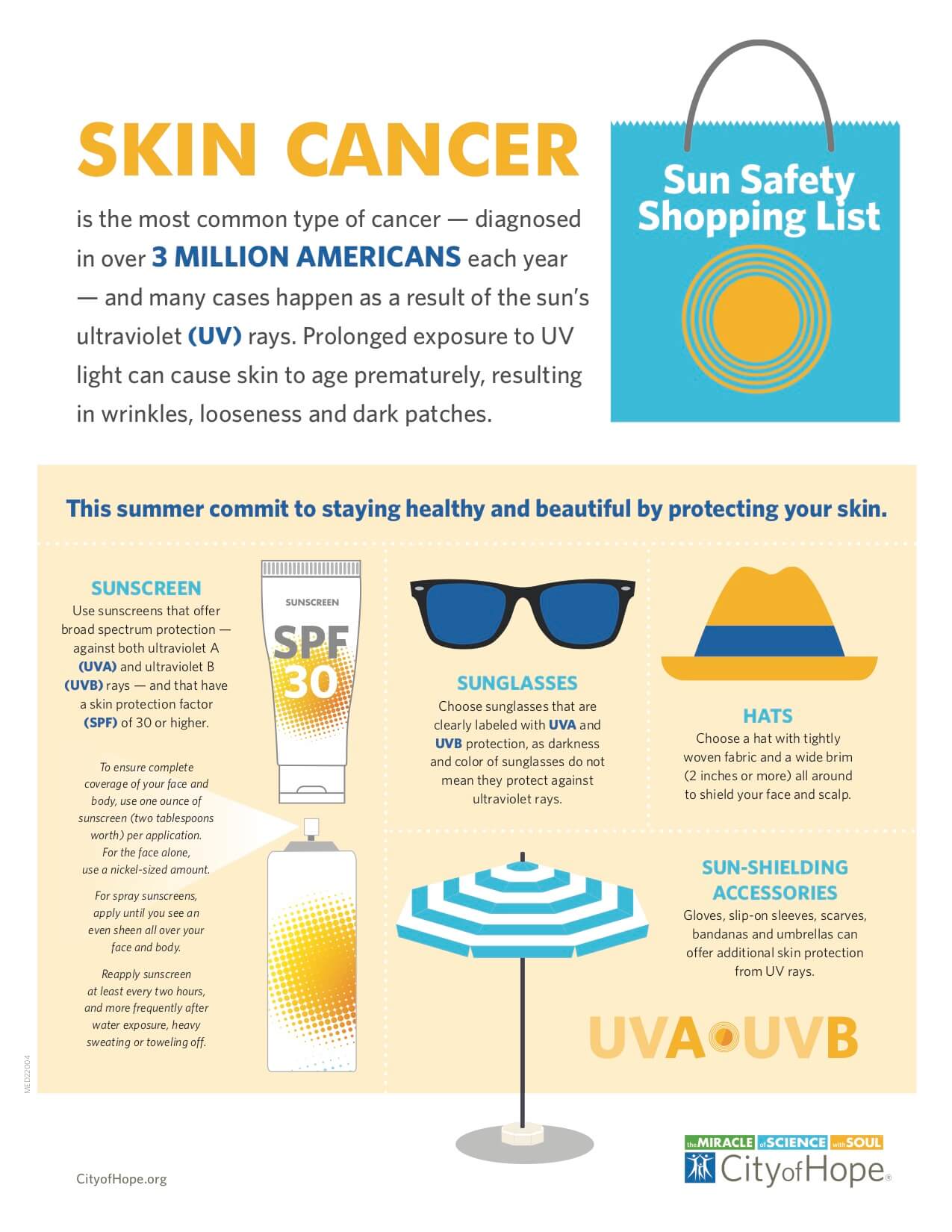
This month is Skin Cancer Awareness Month. Skin cancer is the most common type of cancer in the United States, affecting men, women, and kids alike. According to the American Academy of Dermatology, about 9,500 people in the U.S. are diagnosed every day, and that’s just the beginning of it. (1)
It’s important to know what’s at stake and be prepared for the sunny season. Here are the ins and outs of skin cancer and how you can raise awareness before summer hits!
Types of Skin Cancer
Skin cancer affects anywhere on the skin - the common cancer places being arms and legs - on any skin type, and even hard-to-reach places like genitals and under fingernails. Three types of skin cancer - basal cell carcinoma, squamous cell carcinoma and melanoma - make up the disease.
Signs and Symptoms
The signs of skin cancer vary from type to type, but each cancer type has its own distinctive signs. (2)
1. Basal Cell Carcinoma
- Pearly or Waxy bump
- Bleeding or scabbing sore
- Brow scar-like lesion
2. Squamous Cell Carcinoma
- A crusty, scaly flat lesion
- A firm, red nodule
3. Melanoma
- A mole
- Dark lesions on your extremities or lining your mucous membranes
- A painful lesion that itches or burns
- A small lesion with portions of different colors (pink, red, white, blue, or blue-black).
It’s important to consult your doctor if you see these right away. A screening or test will also help detect skin cancer or skin cancer-related symptoms.

Causes
There are many causes to skin cancer, from cells to risk factors, both of which are internal and can’t be helped. The cells most associated with skin cancer are squamous cells, basal cells and melanocytes while risk factors range from moles to weakened immune systems to fair skin. (3)
Cells
Squamous Cells lie below the outer surface of the skin.
Basal Cells sit beneath the squamous cells and produce new skin cells.
Melanocytes give your skin its pigment, or melanin.
Risk Factors
Here are the factors that may increase your chance for skin cancer:
- Fair Skin
- A history of sunburns and skin cancer
- Radiation Exposure
- A Weak Immune System
- Moles
Prevention
Preventing skin cancer is the most effective way to deal with any disease, skin cancer included. Although some risk factors can’t be helped, there are things you can do that will help you in the long run. Below are some potentially life saving habits to help keep your skin safe.
Sun Safety
Avoid ultraviolet (UV) radiation! UV radiation is one of the biggest factors causing getting skin cancer. Things like tanning beds and the sun’s rays are where UV radiation is found. The hotter the temperature, the more dangerous the ray. Wear a hat, sunscreen, and protective clothing. Check your skin regularly, seek shade, and avoid the sun at peak times during the day (specifically the afternoon). The more safety measures you take, the better your chances will be for preventing skin cancer. (4)

Treatment
Like all cancers, it’s important to treat it right away.
Treatments for skin cancer include chemotherapy, radiation, and other therapies such as surgery to remove the cancer.
Raising Awareness
Now that we know about skin cancer and what it can do, it’s time to raise awareness! (5)
Here are the five ways you can promote skin cancer awareness.
1. Spread the Word
Social media outlets like Twitter, Instagram, and Facebook are great ways to alert the public about the importance of taking care of your skin. With #SkinCancer or #CancerSurvivor, you can target millions following the hashtag and they can view your post on the topic.
2. Share Your Story
Sharing your story is a great, personal way to promote skin cancer awareness. With people following your journey, you are able to make connections and impact someone through a newsletter, social media post, or even in person. A story can can save lives, so share yours.
3. Connect with Organizations
Foundations and support groups, much like the Skin Cancer Foundation, can help skin cancer patients with donations and other efforts. For example, their 2019 Destination: Healthy Skin campaign will provide skin cancer information and free screenings.
There are many foundations and organizations catered to skin cancer and skin cancer patients. Just google and choose the one you like most and donate today.
4. Educate!
Anyone can teach, even you. Informing your friends, family, and colleagues about skin cancer can help spread awareness through knowledge. Knowledge is a powerful thing, so don’t underestimate the power of teachers, a class and quick session - they just may save your life.
5. Buy Merchandise
As always, you can spread awareness through wristbands! The awareness color for skin cancer is black, and at Rapid Wristbands, black rubber wristbands are available. Click the button below to order yours today!
Resources:
.png)
.png)
.png)


.png)
.png)

.png)
.png)
.png)
.png)
.png)
.png)
.png)
.png)
.png)
.png)
.png)
